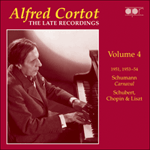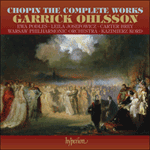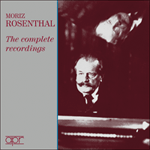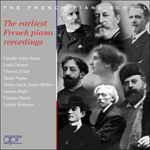
Welcome to Hyperion Records, a British classical label devoted to presenting high-quality recordings of music of all styles and from all periods from the twelfth century to the twenty-first.
Hyperion offers both CDs, and downloads in a number of formats. The site is also available in several languages.
Please use the dropdown buttons to set your preferred options, or use the checkbox to accept the defaults.

from notes by Ateş Orga © 1992
extrait des notes rédigées par Ateş Orga © 1992
Français: Alain Midoux
aus dem Begleittext von Ateş Orga © 1992
Deutsch: Anne Steeb/Bernd Müller
 Alfred Cortot – The Late Recordings, Vol. 4 - Schumann, Schubert, Chopin & Liszt Alfred Cortot – The Late Recordings, Vol. 4 - Schumann, Schubert, Chopin & Liszt'Bryan Crimp has done Cortot proud, prompting one to wonder whether there was ever a pianist of greater human richness and coruscating vitality' (Gram ...» More |
 Chopin: The Complete Works Chopin: The Complete WorksSince his triumph as winner of the 1970 Chopin International Piano Competition, Garrick Ohlsson has established himself worldwide as a musician of magisterial interpretive and technical prowess. This monumental recording project—first instigated by t ...» More |
 Moriz Rosenthal - The complete recordings Moriz Rosenthal - The complete recordings‘Rosenthal had an inimitably seductive manner of playing … with Ward Marston’s superb restoration and remastering, APR’s exemplary annotation and ... ‘The artistry of Moriz Rosenthal (1862-1946) arguably stands head and shoulders above all recorded Liszt pupils’ (Classics Today)» More |
 The earliest French piano recordings The earliest French piano recordingsThis set brings together some of the earliest and rarest piano recordings ever made, not just in France, but worldwide, and includes the complete solo recordings of all the pianists featured except Wurmser. The French office of the Gramophone Comp ...» More |

